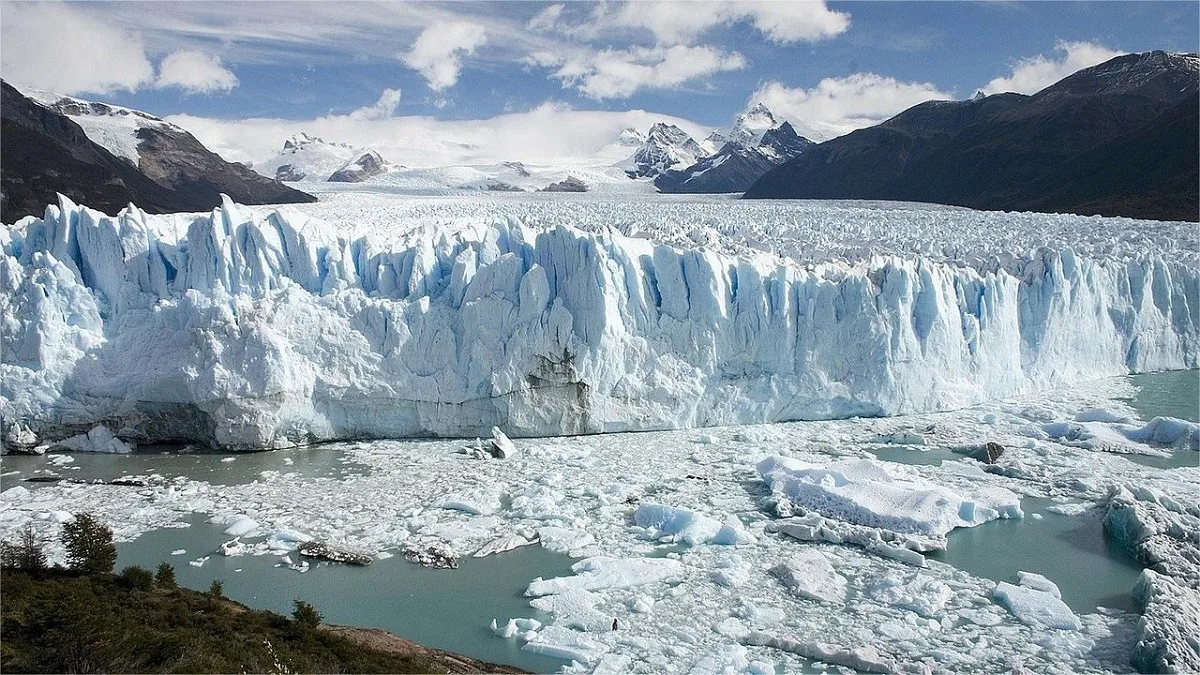The July 1 Glacier (Qiyi Galercier, 七一冰川), located between Zhangye City and Jiayuguan City in Gansu Province, China, is renowned as the closest accessible glacier to an urban area in all of Asia. This high-altitude glacier was discovered on July 1, 1958, by a team of scientists from the Lanzhou branch of the Chinese Academy of Sciences and Soviet glaciology experts. It was aptly named after the date of its discovery.
Geographical Features
The July 1 Glacier is situated on the slopes of the Qilian Mountains, inclining at less than 45 degrees. The glacier’s ice layer averages 78 meters in thickness, reaching a maximum thickness of 120 meters. The glacier’s peak stands at an elevation of 5,150 meters, while its glacier tongue extends down to 4,360 meters above sea level. It holds an annual water storage capacity of 160 million cubic meters, with an annual meltwater output of 700,000 to 800,000 cubic meters, making it a significant solid freshwater reservoir.
The Qilian Mountains
The Qilian Mountains, a series of parallel fault-block mountain ranges, stretch along the southern edge of the Hexi Corridor for about 900 to 1,000 kilometers. The majority of the peaks exceed 3,000 meters, with 26 peaks soaring above 5,000 meters. The name “Qilian” originates from the ancient Xiongnu language, meaning “Heavenly Mountains,” reflecting the awe-inspiring heights of these peaks. The mountain range hosts a total of 3,066 glaciers, covering an area of 2,062.72 square kilometers, showcasing typical high-altitude glacier characteristics. The July 1 Glacier is one of the many glaciers adorning these majestic mountains.
Seasonal Beauty
During the summer and autumn seasons, the July 1 Glacier becomes particularly enchanting. Under the clear blue sky and bright sunlight, the glacier’s peaks glisten and shine, creating a dazzling spectacle. The serene landscape is complemented by the gentle streams, lush green meadows, and blooming alpine flowers, painting a tranquil and lively picture that captivates all who visit.
Glacier Formation
For a glacier to develop in mountainous regions, several conditions must be met. Besides the requisite high altitude, the mountains must not be excessively steep. If the peaks are too steep, the falling snow will simply slide down the slopes, preventing the accumulation necessary for glacier formation. Once snowflakes land on the ground, they undergo transformation. With changing external conditions and time, snowflakes morph into granular snow, losing their crystalline features. Over time, the hardness and density of the granular snow increase as the granules compress and interlock tightly, reducing and eventually eliminating the air pockets between them. The brightness and transparency of the snow diminish, trapping some air within, leading to the formation of glacier ice.
Initially, glacier ice appears milky white. Over the years, it becomes denser and harder, with fewer air bubbles, gradually transforming into clear, blue, crystal-like old glacier ice. Driven by gravity, the glacier ice slowly flows down the mountain slopes, albeit at a very slow pace, forming a glacier.
Location and Transportation
The July 1 Glacier is located in the heart of the Qilian Mountains, within the Qifeng Tibetan Township of Subei Mongol Autonomous County, Zhangye City, Gansu Province, China. It lies approximately 116 kilometers southwest of Jiayuguan.
To get there from Jiayuguan: Take train number 7529 to Jingtianshan Station (镜铁山站). From the parking lot at Jingtianshan Station, board a white tourist bus with scenic area markings that will take you directly to the glacier.




